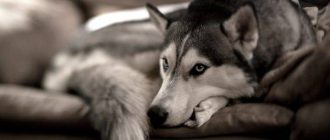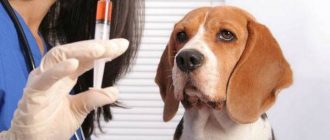The domestic dog, in spite of its excellent care, is also as its owner can get sick. Often ailments relate to organs view. One of the eye diseases is cataract in a dog. This the pathological process that develops inside the eye leads clouding of the intraocular lens. Ailment requires special attention and without timely treatment can cause different complications, including the development of glaucoma and total loss view. If the cataract is small, then therapy is not prescribed, but conduct observation and periodic inspections.
Content
- 1. For what reasons cataract develops
- 2. The stage development of pathology in dogs
- 3. Signs of cataracts in dogs
- 4. Diagnosis of cataract
- 5. Treatment of cataracts in dogs
- 6. Phacoemulsification
- 7. The old technique of cutting tissues of the eye and extraction lens
- 8. How to prevent the development of the disease
Why are cataracts developing?
Contents

Photo cataracts in dogs
The exact origin of this disease has not yet been clarified. Most scientists from different countries agreed in one opinion – eye cataract is a polygenic disease, that is, its manifestation It is directly related to hereditary predisposition.
Studies have shown that all pets suffering from cataract, the same disease manifests itself in 80% of the offspring. According to the results obtained experimentally, to the development of this pathology The following breeds are prone:
- poodles – dwarf, toy, royal;
- American and English Cocker Spaniels;
- miniature schnauzers;
- golden (golden) retriever;
- Terriers – all varieties, including Yorkshire terriers.
However, experts did not reveal why precisely these breeds high risks of such a disease. In addition, there are other causes and underlying factors in the development of pathology. For example, injuring a dog.
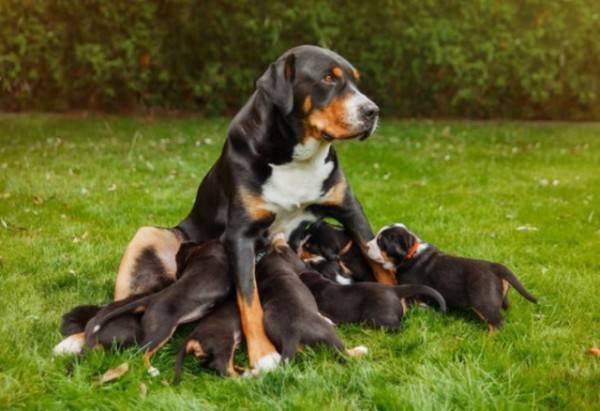
According to studies, 80% of the offspring of the dog will be manifested cataract disease
It can be like mechanical damage – bumps, emergency situations, damage due to games or fights, and arising from chemical burns – contact with caustic alkali in the eyes or acids. Cataracts may also occur after a strong UV exposure. It is extremely rare that an ailment can be caused by temperature differences – after hypothermia of the pet or its long being in the heat.
Pathological changes in the eyeball can occur on background of the following ailments:
- diabetes mellitus;
- autoimmune diseases;
- diseases of infectious origin, in most cases chronic form with frequent relapses;
- body intoxication – although poisoning extremely rarely affects the development of cataracts, but such cases in veterinary practice are still marked. Sometimes this is due to the irresponsible approach of the hosts, allowing yourself to treat your pet with alcohol. Some believe that a small amount of vodka in a dog’s drink will become prevention of various diseases. This is fundamentally wrong and adversely affect the health of the dog;
- old age – any health problems worsen with age, and this cannot be foreseen.
Stage development of pathology in dogs
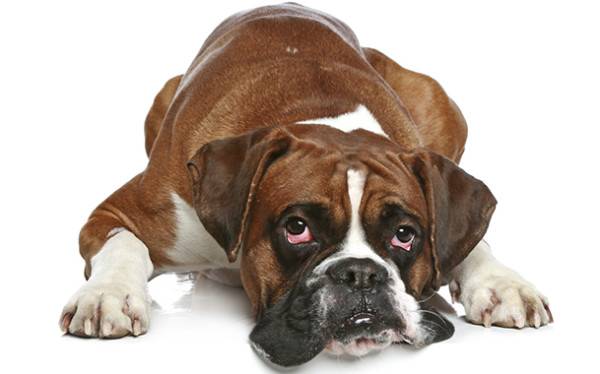
Cataracts in dogs occur in two forms, each of which has its own characteristics
Like humans, canine cataracts come in two forms – primary disease and secondary. In the first case, the cause is a congenital pathology associated with heredity. The disease may occur due to infection of the fetus inside womb, trauma, toxic damage during formation the lens. This form of the disease spreads to both eyes and has a symmetrical development on both sides.
The senile cataract also belongs to the primary form of pathology. The ailment has several stages of development:
- The initial stage is long, it can last more than one year. Modern veterinary medicine has methods for early diagnosing cataracts in animals. Timely therapy able to slow down its development and prevent the transition to the next stage. But, unfortunately, this is extremely rare.
- Immature cataract – the area of turbidity increases, severity Pet’s vision is reduced. Veterinarians do not recommend prompt intervention during this period.
- Mature cataract – is distinguished by a simpler diagnosis. Severely impairs the vision of the pet, and the animal is exposed operations.
- Overripe cataract – a condition in which it is necessary emergency removal.
There is still a secondary disease that occurs and develops against a background of various pathological conditions, for example, diseases of the immune system, diabetes. This form cataracts are less common, but it is much more difficult to treat.
Signs of Cataracts in Dogs
The most obvious symptom of the disease is a cloudy lens. If a the process began in the central part of the eye, its simple enough to notice. But if pathological changes initially occur in the peripheral tissues of the eye, then with the naked eye it is not see.
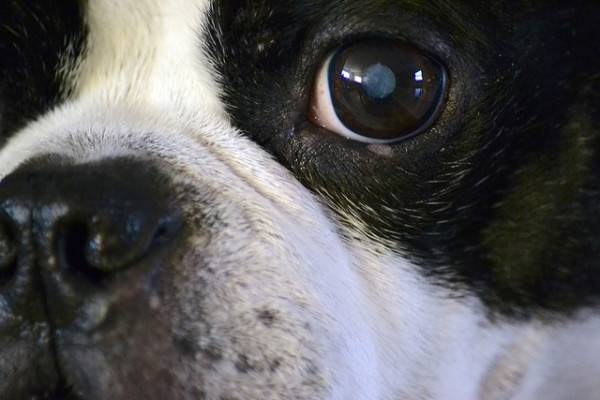
Always pay attention to the pupil’s lens. Cloudy lens – clear sign of cataract.
With cataracts, the appearance of the eye in the pet changes, it turns pale and acquires a bluish tint. Upon detection a similar pathology, you must seek help from a veterinary service. Here, differential diagnostics will be carried out, eliminating the likelihood of developing other ailments that have similar symptoms.
If these clinical manifestations are ignored, then the disease can lead to increased intraocular pressure, and the pet constant headaches will torment. Ailment can cause irreversible consequences in a dog – it will end completely blindness.
Cataract Diagnosis
Diagnostics includes a number of measures:
- general inspection of the animal;
- external examination of both eyes;
- if you suspect a cataract, an electroretinogram is prescribed, which confirms or refutes the presence of the disease and helps to evaluate its stage and degree of damage.
Only after making sure the diagnosis is correct, the veterinarian appoints competent treatment.
Dog Cataract Treatment
Cataract is a disease that does not respond to conservative treatment. If she showed up at the very beginning development, that is, the ability to stop further distribution with the help of vitamin and drugs, enzyme solutions and etc.

Surgery is the only way to cure cataract
A drug capable of treating cataracts has not yet been exists, although many scientific laboratories study this problem. In modern medicine and veterinary medicine the best and the only effective way is operational intervention. There are two types of surgery: phacoemulsification and surgical removal.
Phacoemulsification
This method is widely used in modern medicine and It is highly efficient. Its use is possible even with advanced forms of cataracts – in the stage of overriding. Spend procedure as follows:
- a special ophthalmic is introduced into the eyeball device – ultrasonic flaw detector;
- the lens is crushed;
- through the hole formed with a diameter of about 1.5-2 mm, cataract is sucked off.
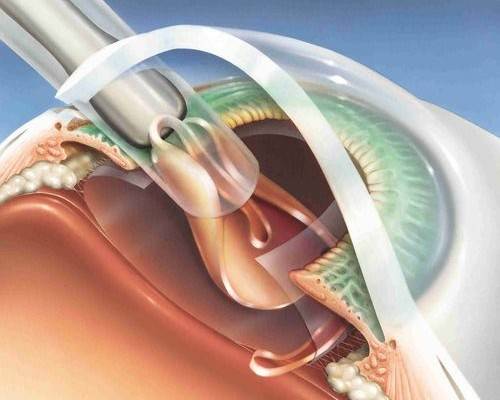
The process of cataract suction during surgery phacoemulsification
To reduce the risk of complications, the veterinarian makes a puncture in peripheral tissues of the ocular cornea. Instead of remote the lens is placed an intraocular lens or lens of artificial materials. New lens, minimized, through the puncture is placed in the lens bag, where it is put in place damaged item.
More recently, surgical interventions only for mature cataracts. Today ophthalmologists changed their views and agreed that phacoemulsification is quite effective at the initial stage diseases. In this case, the “soft” lens is removed, which is less traumatic than in the later stages of the disease.
To avoid possible mechanical injuries, the preparation period for the operation of the animal is injected into the eye viscous viscoelastics.
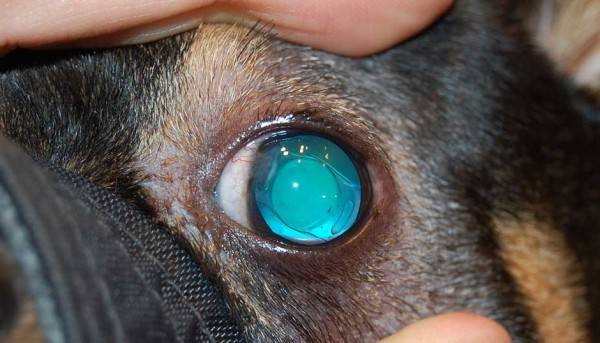
The eye of the dog after the phacoemulsification procedure looks like this
If veterinarians encounter cataracts in both eyes, which the lens of one eye is cloudy and a sharp decreased visual acuity, and in the second eye there is intense disease progression, it is recommended initially perform surgery on the second eye, and on the first after 2.5-3 months.
This operation is shown to animals, starting with a six-month age to advanced 18 years. Modern equipment allows carry out such operations without the direct involvement of the surgeon, and the risks of complications for the pet are minimal. After the procedure the animal recovers quickly enough.
Read also about other eye diseases in dogs.
Old eye tissue cutting technique and extraction lens
Complicated cases of the disease occur when it is impossible replace the lens with a pet. For example, they do not recommend doing this, if the pet is living its last days, the dog has diabetes in a severe form, etc. An artificial lens is not placed if animal eye pressure cannot be normalized.
How to prevent the development of the disease
First of all, it is important to monitor the health of the pet, regularly visit the vet. This is especially important if the age of the animal over 6 years old.
Given the hereditary predisposition of some breeds to the disease, when buying a puppy, it is worthwhile to clarify whether he is suffering parents with this disease.
It is necessary to regularly conduct eye hygiene procedures dogs, wipe the corners, use drops if the pet dry eyes or a tendency to eye diseases. Important provide your pet with good nutrition and on time to inoculate.

